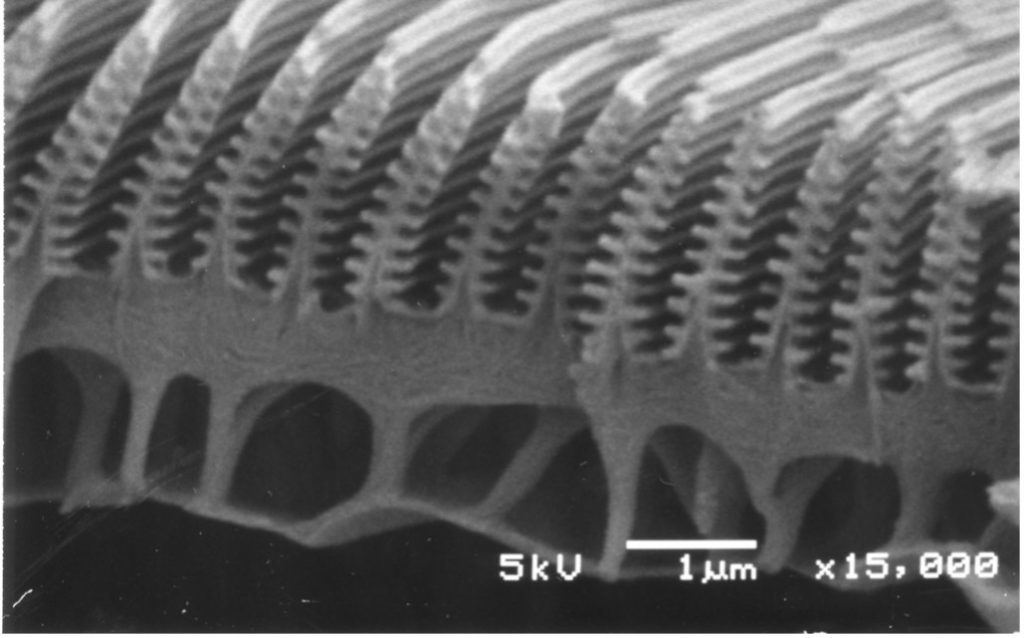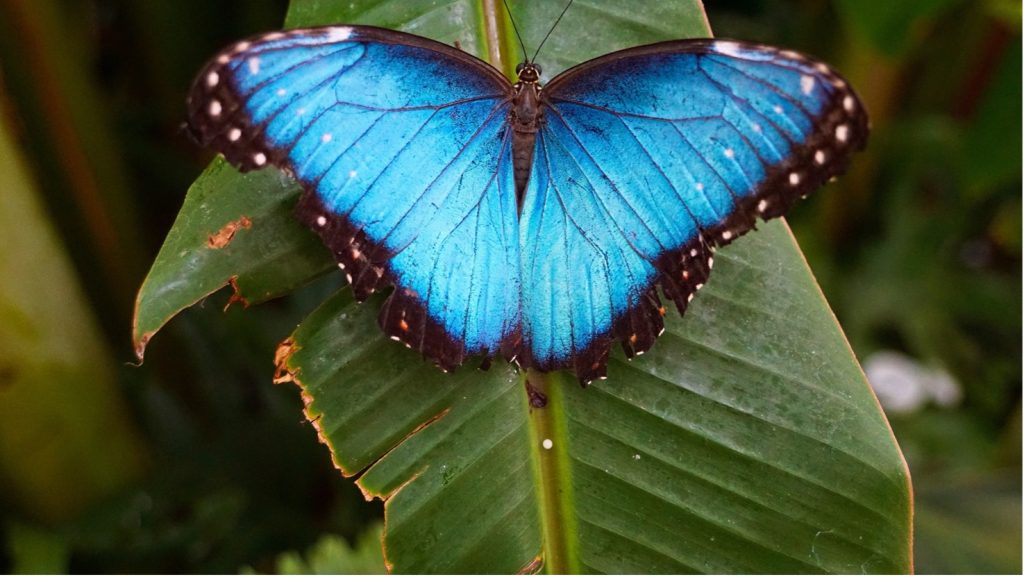The bright and colorful hue of animals’ pigmentation has always fascinated people. Over the past 200 years, scientists managed to purify many of the pigments involved in these colors. These studies also revealed the particular nature of blue pigmentation in animals and plants.
Role and genesis of color in nature
Size and shape, as well as colors and patterns are important features to animals’ and plants’ life: for camouflage, mating, or warning against danger. Pigmentation occurs in almost all living organisms. In nature, there are three main sources of colors: pigments, bioluminescence, and structural colors. Plants, for example, use their bright colors to attract insects like bees or butterflies, that are essential for pollination and seeds dispersal. In plants, pigmentation derives from chlorophyll (green), carotenoids (red, orange, yellow), anthocyanins (red or blue, depending on pH); in animals, it mostly comes from melanin (the red-brown pigment expressed in skin cells) or from the diet (like flamingos or salmons). Bioluminescence, on the other hand, is mostly used by bacteria as warning signals or to attract mates and is given by a specific enzyme called luciferase.
What about structural colors?
Among the most striking visual effects found in nature, there is the iridescence given by structural colors. They are often encountered among animals, especially in birds, fishes, and insects. These colors change hue according to the angle of viewing thanks to phenomena that involve light scattering. The wing of one of the prettiest butterflies of all, the Morpho menelaus (blue morpho, the butterfly shown in the cover picture), is made of tiny scales. These scales are made of microscopic structures shaped as Christmas trees (see figure 1 below), that reflect blue light. The peacock’s feathers and blue parrots are further examples of this phenomenon.

Some animals do more than reflecting the blue light, they can actually synthetize blue color, but it’s a very rare phenomenon and the only known vertebrates able to do that are some species of Callionymid fish like the mandarin fish, as can be seen in figure 2.

As previously mentioned, the blue pigment is extremely rare in nature. How is it possible then that some people have blue or grey eyes? As for the peacock’s feathers or the blue morpho wings, some people’s eye color depends on the way light interacts with the few melanin granules present in their stroma (the upper layer of the iris in the eye)… so, in the end, we all are a trick of physics!
Author: Francesca Abela
Buddy: Kim Beneyton
Editor: Brittany van Beek
Translator: Jill Naaijen
Editor translation: Felix Klaassen
Picture credits: Damon on road from Unsplash
